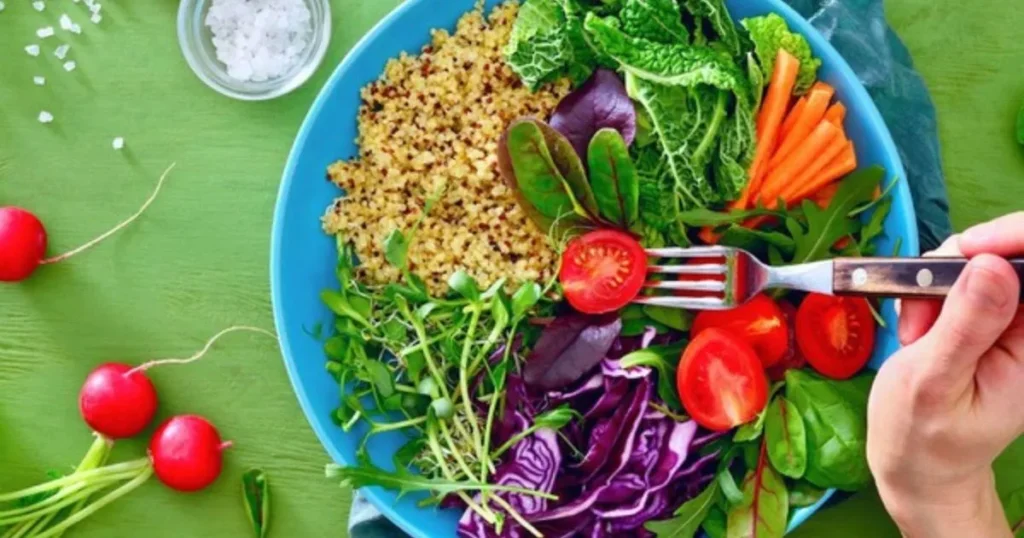What is Keto Diet and Fat Consumption
The ketogenic or Keto diet is favorable for weight loss and optimal health improvement. It consists of low-carb, moderate protein, and high-fat principles. It focuses on the body’s reliance on fats for getting energy. The individuals adhering to this dietary approach, secure a sufficient intake of healthy fats to maintain ketosis for enjoying the healthy results.
Let’s review the effective strategies on how to get enough fat while on a keto diet.
Embrace Healthy Fat Sources

Incorporating a variety of healthy fat sources into a keto diet is foundational. Regardless of different existent fats; Avocados, olive oil, coconut oil, seeds, and nuts stand out as superb, easily available, and inexpensive sources of healthy fats. They work twofold in providing essential fats and delivering an array of vital nutrients to the consumer’s body.
Chose Fatty Cuts of Meat and Fish
Meats in the Keto diet are fatty cuts of beef, lamb, pork, and oily fish like salmon or sardines. They perform a pivotal role in augmenting fat intake. These meaty and fishy fat selections help in maintaining cuisine variety, and diversity of food taste, and fulfill the required fat quota.
Include Full-Fat Dairy Products

Dairy products are also a primary source of the keto diet. Choosing full-fat dairy products such as cheese, butter, Ghee, kefir, Greek yogurt, heavy whipping cream, and sour cream is instrumental in amplifying fat content in meals. These dairy products not only serve as required fat sources but also offer supplementary nutrients crucial for sustaining a keto lifestyle.
Cook with Healthy Oils

Almost all the cooking oils are free of carbs, but full of fat. However, some oils are better in connection with a keto-friendly diet. These include animal fats, olive oil, ghee, coconut oil, avocado oil, and butter. Such cooking oils not only elevate taste but also make it easy to get enough healthy fats during keto diet. These oils impart distinct flavors while contributing to the essential fat requirement.
Add the Nut Butters
Nut butter is the best intake in the ketogenic diet, and a rich source of healthy fats, magnesium, folate, fiber, vitamins, potassium, calcium, and minerals. The best nut butter to cater the required fats to the body are Macadamia, walnut, pecan, almond, and hazelnut.
Keto Seeds

Irrespective of their type, seeds are a good source of keto fat. They are sugar free, low in carb, full of minerals and vitamins, and with plenty of quality nutrition. Chia seeds, flaxseeds, sesame seeds, sunflower seeds, pumpkin seeds, and hemp seeds are recommended in keto diet.
Use High-Fat Sauces and Dressings
Incorporating high-fat sauces and dressings crafted from ingredients like mayonnaise, olive oil, or avocado bolsters both taste and fat content in meals. This fulfills the demands of a ketogenic regimen.
Include Eggs in Your Diet

Eggs are a standout addition to a ketogenic diet owing to their richness in healthy fats and essential nutrients. Eggs offer not just fats but also significant levels of protein and other essential vitamins and minerals. Moreover, they serve as a versatile ingredient, easily incorporated into various meal preparations such as omelets, and scrambles, or used as a binding agent in keto-friendly baking recipes.
Consider Keto-Friendly Supplements
While adhering to a ketogenic diet, certain supplements can serve as valuable assets in augmenting fat intake. MCT oil stands out among these supplements due to its unique ability to quickly convert into ketones, assisting individuals in maintaining ketosis. Additionally, fish oil supplements, rich in omega-3 fatty acids, contribute not only to meeting fat requirements but also to overall health and well-being.
Track Your Macronutrient Intake

Keeping meticulous track of your macronutrients is a cornerstone of successful ketogenic dieting. Utilizing apps or maintaining a food diary assists in monitoring fat intake, and the consumption of carbohydrates and protein. This will help in understanding the composition of meals and ensuring they align with keto principles allowing for better regulation and maintenance of ketosis.
Experiment with Keto-Friendly Recipes

Exploration of an array of keto-friendly recipes not only introduces variety into meals but also significantly contributes to fulfilling daily fat goals. These recipes encompass a diverse range of flavors and culinary styles, catering to various preferences while ensuring compliance with ketogenic principles. From creamy avocado salads to coconut-infused curries, these recipes optimize healthy fat consumption without compromising taste.
Additional Tips for Ensuring Enough Fat Intake on Keto Diet
1. Portion Control and Moderation: While incorporating healthy fats is crucial, maintaining portion control is equally essential. Moderation ensures that while fulfilling fat requirements, individuals stay within their daily calorie limits, and foster weight management.
2. Meal Planning and Prepping: Creating a structured meal plan enables better control over fat intake, ensuring meals are balanced and aligned with keto guidelines. Additionally, meal prepping aids in maintaining consistency and avoids the temptation of straying from the diet.
3. Consultation with a Nutritionist: Seeking advice from a nutritionist or dietitian specializing in ketogenic diets offers personalized guidance. They provide tailored strategies to optimize fat intake, ensuring it aligns with individual health goals and dietary needs.
Conclusion
Sustaining adequate fat intake is pivotal for achieving success and reaping benefits from a ketogenic lifestyle. Through a conscious selection of healthy fat sources, diligent meal planning, and mindful supplementation, individuals can ensure they meet their fat requirements while seamlessly adhering to the principles of the ketogenic diet.
- The Ultimate Keto Meal Plan: Benefits and Recommendations - June 28, 2024
- Keto Gummies: Are They Safe for Weight Loss? - May 23, 2024
- Shiitake Mushrooms: 9 Health Benefits And Uses - April 19, 2024


